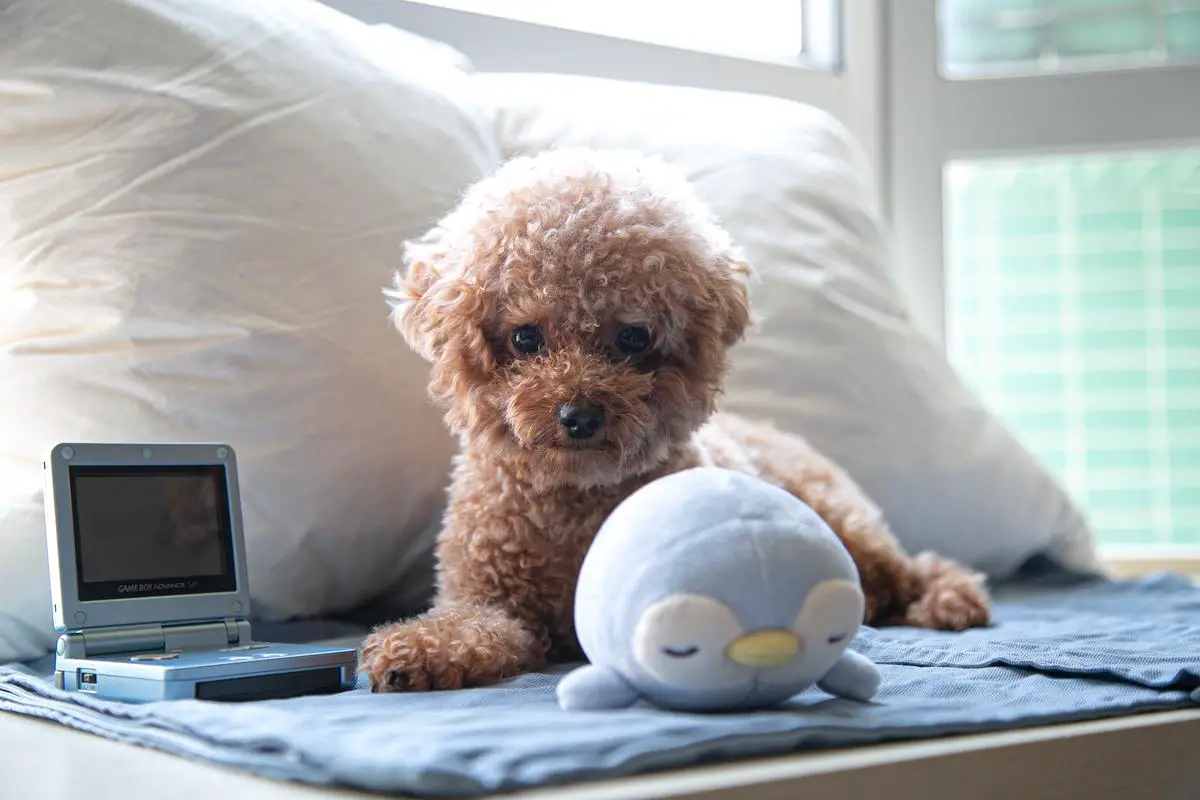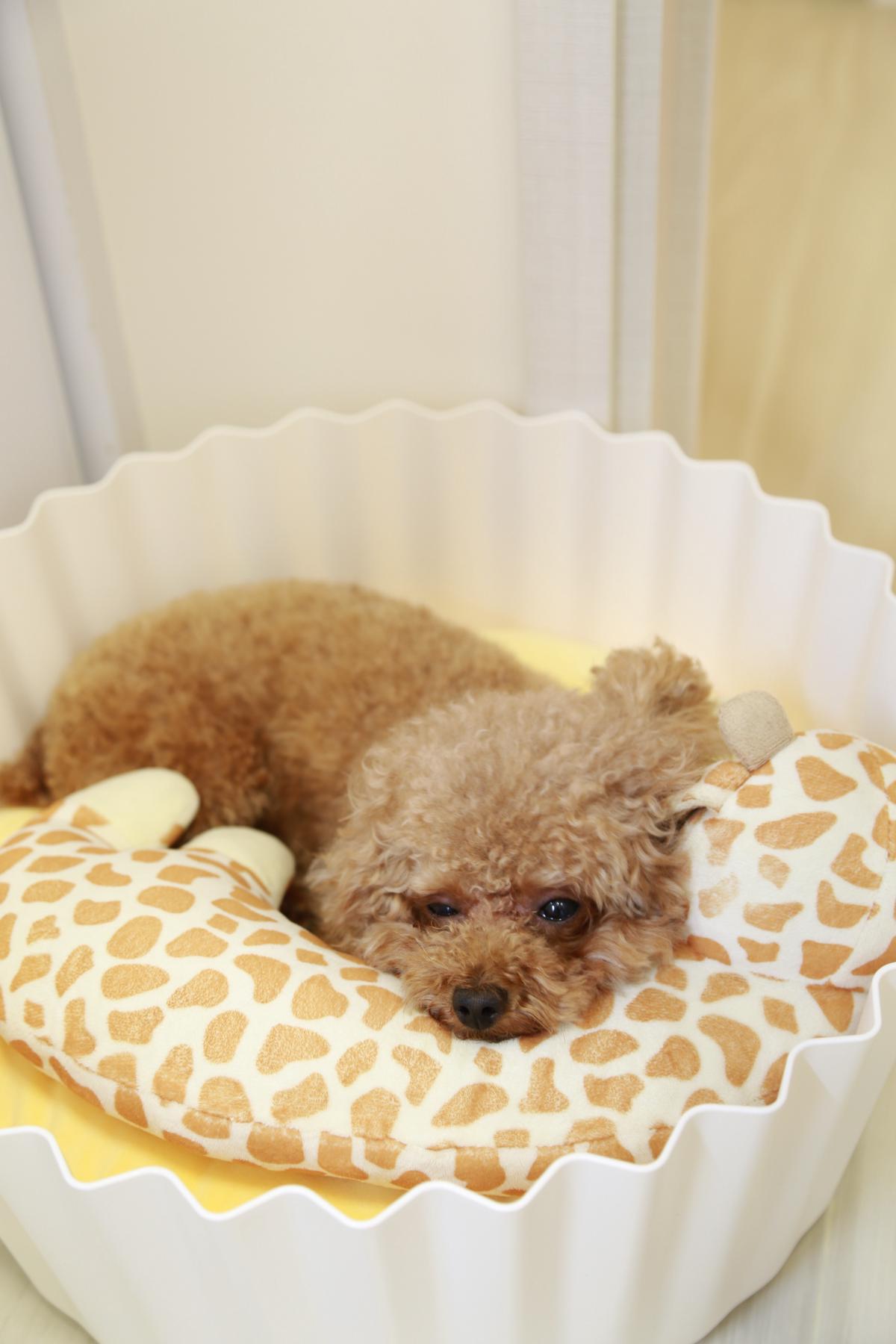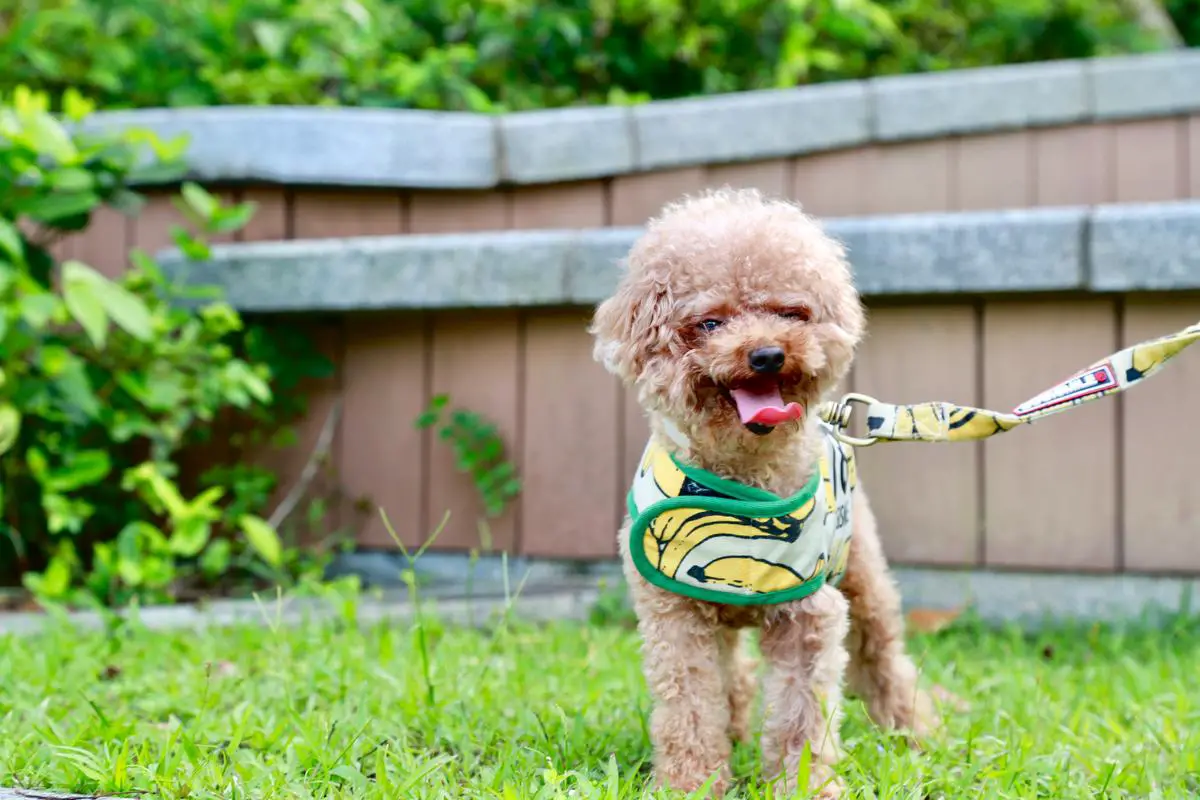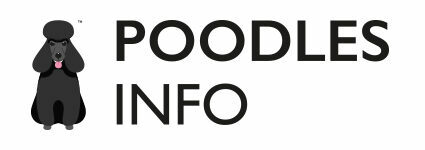Handling Teacup Poodle Separation Anxiety: A Comprehensive Guide
Anyone fortunate enough to share their home with a teacup poodle understands the boundless love and companionship they offer. However, like all pets, they too are prone to specific behavioral issues, and one of the most common among them is separation anxiety. To fully grasp this behavior in these petite canines, we’ll be delving into its roots, identifying how signs and symptoms manifest and appreciating the impact this has on their overall well-being. Identifying why this breed tends to disproportionately experience separation anxiety, as opposed to others, provides further insight into this phenomenon. Furthermore, this discourse examines the crucial role of training, the influence of diet and exercise on their mental health, along with gaining an understanding of the instances when medical and professional intervention plays a crucial role.
Understanding Separation Anxiety in Teacup Poodles
Understanding Teacup Poodles and Separation Anxiety
Teacup poodles, often weighing under six pounds, are highly intelligent dogs bred to be companions. Their small size and affinity for human interaction make them susceptible to separation anxiety, a distressing condition that affects many dogs, but is particularly common in teacup poodles.
Causes of Separation Anxiety in Teacup Poodles
The likelihood of developing separation anxiety often depends on a dog’s background and personality. In teacup poodles, the condition may be triggered by several factors, including changes in their environment, a shift in their owner’s schedule, moving to a new home, or losing a loved family member.
Like most dogs, teacup poodles are pack animals. However, their nature as companion pets signifies they tend to form a close bond with their owners. When their companion is away, they can become stressed and anxious, leading to separation anxiety.
Common Signs and Symptoms of Separation Anxiety
Signs of separation anxiety in teacup poodles are noticeable but can sometimes be confused with general disobedience. However, the following behaviors often point to separation anxiety: continual barking or howling when left alone, destructiveness such as chewing on furniture or shoes, inappropriate elimination (urinating or defecating in the house), and persistent pacing. Increased drooling and signs of restlessness can also signal anxiety.
If your teacup poodle exhibits these behaviors only when you’re away, there’s a high chance it’s suffering from separation anxiety.
Impact on Mental and Physical State
Separation anxiety doesn’t merely affect a teacup poodle’s mental state; it can also have a significant impact on its physical health. Prolonged anxiety causes stress, which can lead to problems like decreased immunity, increased heart rate, and digestive issues.
Mentally, separation anxiety can cause a teacup poodle to live in a state of constant worry and fear, leading to behavioral problems. This level of stress can also make them more prone to illnesses and can shorten their lifespan.
Why Do Teacup Poodles Often Develop Separation Anxiety?
Teacup poodles are more likely to have separation anxiety compared to other breeds. This tendency primarily stems from their breeding as companion pets. Given their size, early owners often carried teacup poodles around, meaning these dogs were rarely alone.
This close interaction with humans has made the breed highly sociable, and they often form strong bonds with their owners. However, this also means that they do not cope well with being alone, leading to a higher prevalence of separation anxiety.
Understanding and Navigating Teacup Poodle’s Separation Anxiety
Understanding and navigating a teacup poodle’s separation anxiety calls for great commitment, persistence, and compassion. Keep in mind that these tiny pets aren’t willfully acting out; they’re responding on instincts and fears. Employing a blend of training, socializing, creating a stimulating environment, and in severe situations, enlisting the help of a behavioral specialist can help combat this issue effectively.

Photo by alisonpang on Unsplash
The Role of Training and Socialization
Addressing Teacup Poodle Separation Anxiety with Training and Socialization
Teacup poodles, like all pets, require thorough training and socialization for proper development. Separation anxiety is a concern with teacup poodles that can lead to problematic behavior such as unnecessary barking and even let to an extent of property destruction. This condition typically arises when a poodle forms an incredibly close bond with its owner, consequently leading to anxiety when left alone.
By ensuring your teacup poodle is well-trained and socialized, you can help to significantly mitigate the impact and occurrence of separation anxiety. The relevance of these two factors in preventing and managing this condition demand emphasis.
Introducing Beneficial Training Techniques
Our teacup poodles can develop into confident and well-adjusted companions when effective training strategies are put into place at an early age. Training should be consistent, clear in communication, and remain engaging considering the mental agility and relatively short attention span of teacup poodles. To get them used to being alone, it’s a good idea to gradually increase the duration in which they’re left on their own.
Poodles also need to be comfortable with being alone. This can be achieved by rewarding them with favorite toys or treats which are exclusively offered when you’re about to leave.
Commencing Training at the Right Age
Start training your teacup poodle as a young puppy, preferably from 8 to 10 weeks old. During these early stages, they readily embrace new learnings, making training more effective. However, if they’re adults, it’s never too late for them to learn the ropes of managing separation anxiety – all it takes is some time and patience.
Prioritizing Social Interactions
Just as training is important, so is the socialization of your teacup poodle. Introducing them slowly to diverse environments, people, and other animals can actually minimize anxiety and fear of the unknown. Puppy socialization classes come recommended as they offer a secure environment for them to learn and engage with their mates.
Getting a Professional Dog Trainer’s Help
If your efforts aren’t yielding the desired results and your teacup poodle’s separation anxiety persists or worsens, it’s recommended to consult a professional dog trainer. They possess the necessary expertise and can proffer unique interventions suitable for your situation. They can assist you with a structured and comprehensive approach to your poodle’s separation anxiety.
Handle your teacup poodle’s separation anxiety with patience, consistency, and love. Make sure you adjust your approach based on your poodle’s progress and remain calm and positive to support them throughout.

Photo by alisonpang on Unsplash
Diet, Exercise, and Mental Stimulation
The Role of Diet in Alleviating Poodle Separation Anxiety
For a teacup poodle that experiences separation anxiety, the right diet can make a meaningful difference. A balanced diet can ensure your poodle’s brain function and energy levels are at optimum levels, aiding in lessening the symptoms of anxiety. Foods rich in Omega-3 fatty acids like fish oil and flaxseed oil can bolster brain health. Additionally, antioxidants present in brightly colored fruits and vegetables combat oxidative stress that is often linked to anxiety disorders. Consider consulting a pet nutritionist for a tailor-made diet suited to your anxious teacup poodle’s needs.
Exercise: Enhancing Physical and Mental Well-being
Exercise in dogs has been linked to numerous benefits, including improved cardiovascular health, weight control, and better brain health. Regular physical activity can help counteract the effects of stress and anxiety.
For teacup poodles, regular walks, playtime, and games like fetch provide great physical and mental stimulation. It is recommended that these dogs get at least 30 minutes of vigorous physical activity every day.
By exercising your teacup poodle before leaving, you can help drain the excess energy that might otherwise manifest as anxious behaviors. Physical activity promotes the production of serotonin, a feel-good hormone that can boost your pet’s mood and decrease anxiety levels.
Mental Stimulation: Keeping the Mind Engaged
Alongside the diet and exercise, it is importantly relevant to keep your teacup poodle mentally stimulated. This can help to keep the anxiety at bay by occupying the mind in your absence. Training sessions, puzzle toys, treat-dispensing toys, and even classical music can help keep your furry friend occupied and mentally stimulated.
Training sessions also allow for a stronger bond between you and your pet, which can lessen their anxiety when you’re away. Puzzle toys like Kong treat-dispensing toys or dog-friendly puzzles give your precious pup something to do when they are left alone, thereby reducing their anxiety through distraction.
Introducing new toys or rotating the existing ones can keep your pet engaged and stimulated. The novelty can keep their interest piqued, warding off boredom-induced anxiety. However, always ensure that the toys you give your poodle are safe and suitable for their size.
Keep in mind that while implementing certain strategies might help manage your teacup poodle’s separation anxiety, they may not necessarily lead to a full recovery. It’s vital to note that every dog has unique needs and varying responses. Therefore, what might prove effective for one pet might not yield the same results for another. It is always best to foster a supportive environment through a holistic approach combined with positive reinforcement. This will make your teacup poodle feel safe and loved. If the symptoms of anxiety persist or seem to escalate despite your best efforts, it may be time to seek guidance from a veterinarian or an animal behaviorist for further specialized treatments.

Photo by alisonpang on Unsplash
Medical and Professional Interventions
Signs That Your Teacup Poodle Might Need Professional Help For Separation Anxiety
Recognizing and addressing symptoms of separation anxiety in your teacup poodle is of paramount importance, as this goes a long way in maintaining their overall emotional and physical well-being. Extreme behaviors like constant barking, causing damage to household items, inability to control bowel movements, or exhibiting signs of aggression and depression could be indicative of heightened separation anxiety.
If you have tried common techniques such as crate training, leaving some background noise on like the television or a piece of soft music as a distraction, or even made use of calming scent products, and yet there’s no noteworthy improvement, you might need to consider the option of seeking professional help.
Monitoring your dog’s behavior via video surveillance while you’re away can be of great help, as it provides you and the professional with concrete evidence. This can greatly influence the decision-making process, thereby helping in coming up with the most effective intervention plan for your poodle.
From Vets to Dog Behaviorists: Professionals in Pet Anxiety Management
There are a range of professionals that provide services to help alleviate your teacup poodle’s separation anxiety. Veterinarians, for example, can diagnose and treat any underlying physical health issues contributing to the problem.
Veterinarians may also refer you to a veterinary behaviorist, a specially trained vet who addresses pet behavioral issues by combining medical, environmental, and behavioral interventions.
Dog behaviorists, on the other hand, are specialists that can help to address the issues from a behavioral perspective. They work on changing problematic behaviors through behavior modification techniques.
Certified professional dog trainers may also be engaged to use evidence-based learning theories to reduce anxiety-related behaviors.
Medical Interventions
Depending on the analysis of your pet’s behaviors, medical intervention may be considered as an option to alleviate your pet’s anxiety. Anti-anxiety medication, antidepressants, or sedatives may be prescribed by your vet or veterinary behaviorist to help calm and relax your pet.
Examples of often-used medications include SSRIs (Selective Serotonin Reuptake Inhibitors) like fluoxetine, or benzodiazepines such as alprazolam. These assist in changing the mood and behavior of the animal. Pheromone products may also be recommended to help reduce anxiety.
It’s crucial to note that medication is typically used in combination with non-medical interventions. It shouldn’t be viewed as a standalone solution.
Behavioral Modification Techniques
Behavior modification techniques aim to change the emotional response and behavior of the teacup poodle when left alone. Techniques include desensitization, counter-conditioning, and positive reinforcement.
Desensitization involves the gradual habituation of your dog to being alone, starting with very short, tolerable separations that increase slowly over time. Counter-conditioning can redirect your dog’s emotional response to separation.
Positive reinforcement, where beneficial behaviors are rewarded, promotes consistent and repeatable good behaviors in your teacup poodle.
Harmonizing Medical and Non-medical Approaches
Effective management of severe separation anxiety in teacup poodles typically involves a combination of medical treatment and behavioral modification. Your professional team can guide you through this process, establishing the most suitable combinations for your pet.
Remember, patience and consistency are key in dealing with this issue. With professional intervention, your furry friend will gradually learn to cope with separations, leading to improved quality of life for both you and your pet.

Photo by alisonpang on Unsplash
Through intelligent training, regular exercise, cognitive stimulation, as well as a balanced diet, managing separation anxiety in our beloved teacup poodles is an achievable endeavor. Instruments like toys and puzzles that engage them during their human’s absence can go far in mitigating their anxiety symptoms. However, it’s imperative to understand that in some cases, this anxiety goes beyond home management, and professional intervention is needed to provide the dog with the quality life it deserves. This undertaking, as intricate as it may seem, not only alleviates their unease but also allows them to live a joyous, anxiety-free life. Through actionable steps and informed strategies, we can all take part in making a positive impact on our four-legged friends’ mental health.
